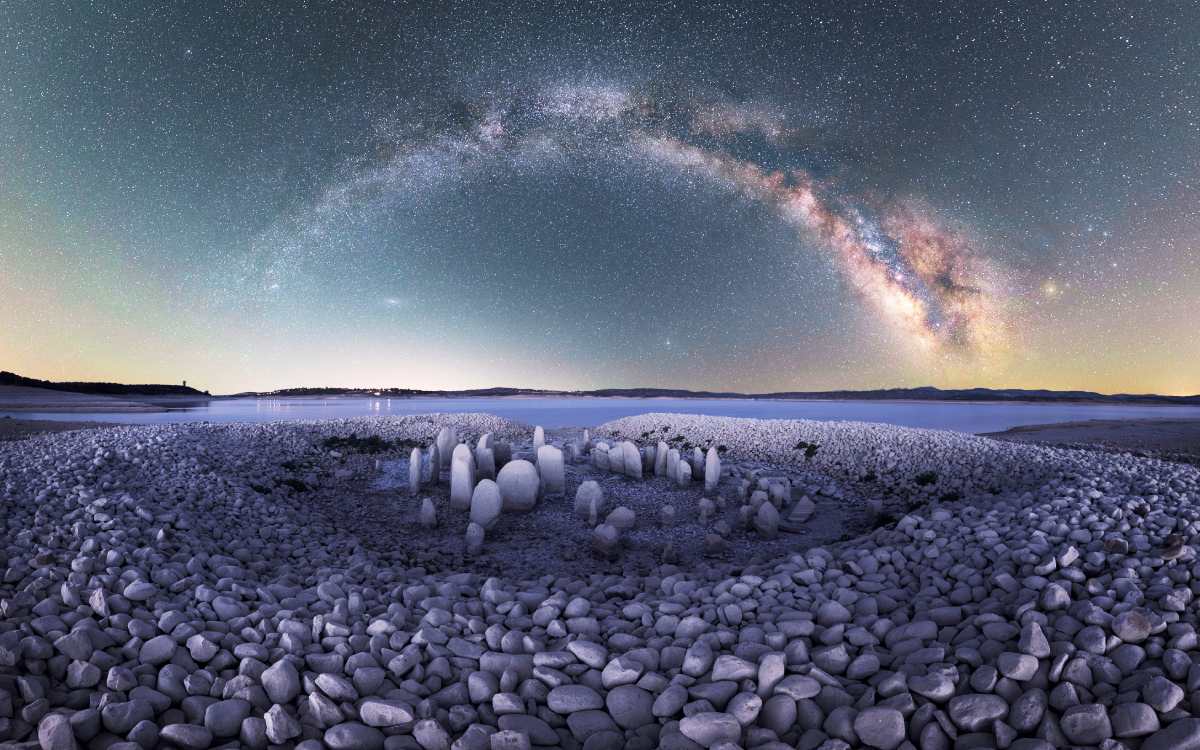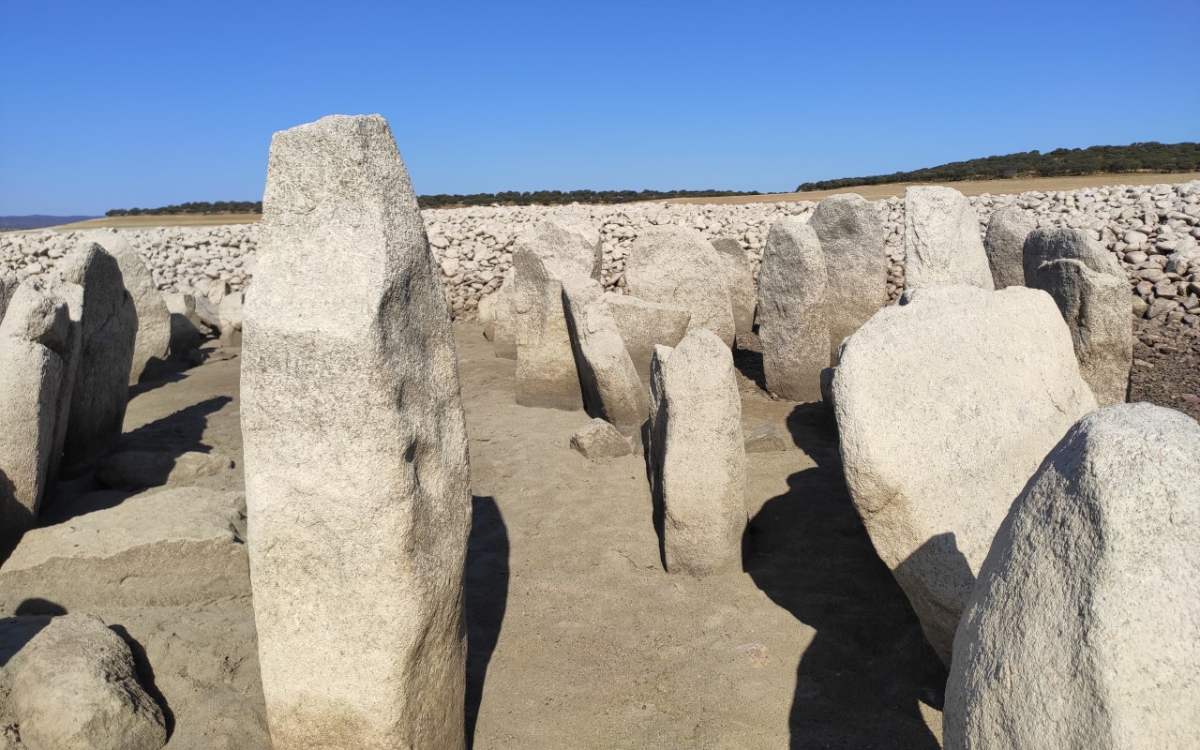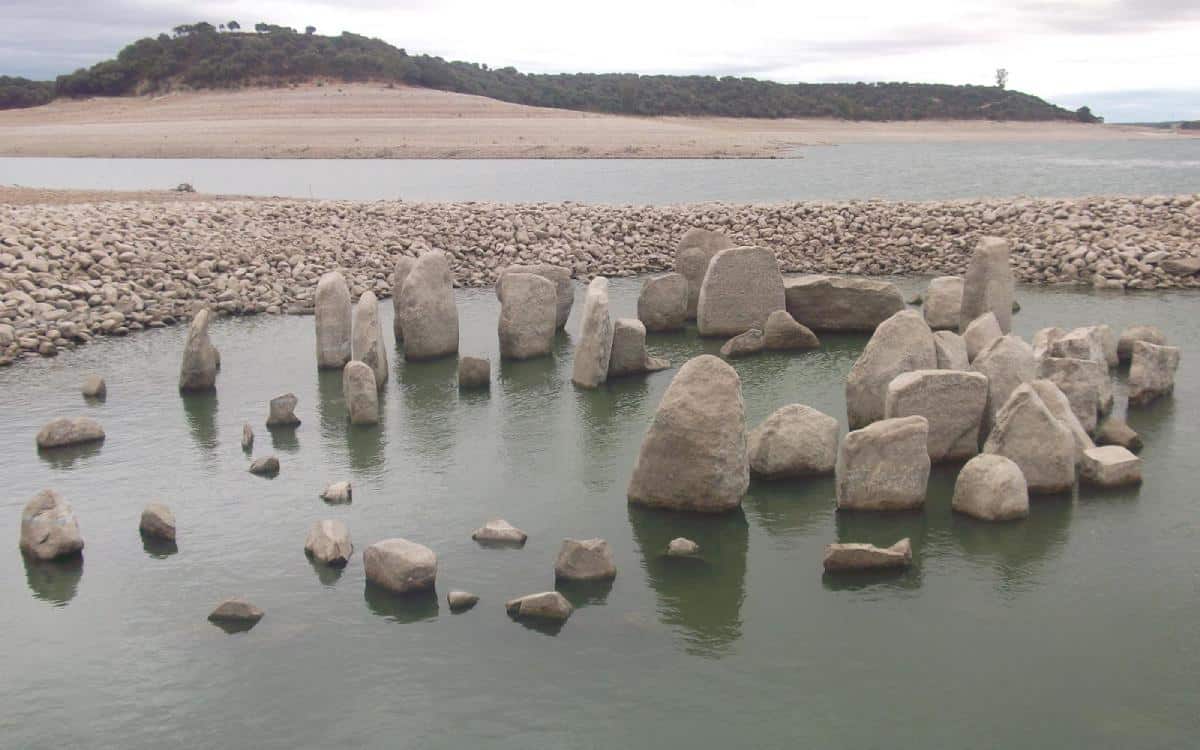
Droughts that cause so much havoc often have extraordinary collateral effects. Only when the water levels descend do we have the opportunity to rediscover treasures that were once left underwater by the creation of artificial reservoirs. Some cases involve villages submerged only decades ago while others that have reemerged are millennial monuments. The latter is the case in the astonishing megalithic collection known as the ‘Spanish Stonehenge’.
The dramatic lack of rain in recent years has permitted the Dolmen of Guadalperal to momentarily escape from its watery prison in one of Spain’s largest reservoirs. It concerns a funerary monument as unique as it is unknown, at least until the drought brought it to light and its image spread like wildfire on social networks. A rather unsettling sight that reminds one of another ancestral treasure located thousands of kilometres away.
Due to its age, its shape, and its archaeological significance, the comparison between the Dolmen of Guadalperal and Stonehenge seems inevitable, even though the differences between both of them are notable. While the purpose of Stonehenge still remains a mystery, in the case of this marvel in Extremadura, it appears evident that it served as a necropolis. However, its visible remains only offer an inkling of how it may have looked thousands of years ago.
What you’ll observe today as the reservoir’s water descends is an arrangement of granite slabs set in a vertical position. In its day, these slabs served as support for a funerary chamber and formed a long passageway leading to it. Atop these stone slabs, others were placed horizontally serving as a roof. At the chamber entrance stands a two-metre-tall menhir. This structure was hidden and covered by a mound of earth and smaller stones that ultimately protected it for centuries against the passing of time and human activity.

The Dolmen of Guadalperal. | Shutterstock
Despite its significance, the Dolmen of Guadalperal has had a fickle history. Exactly when it was erected is unknown, but it does appear to be between five and seven thousand years-old. For a good part of that time, it has remained hidden away from human attention. Firstly, because of the soil, which allowed the standing stones to blend in with its surroundings, and later, owing to the dammed waters from the Tagus River.
It seems destiny was determined to conceal this fabulous megalithic structure from sight. Yet, every now and then it manages to show its face to the world to remind people of its millennial history. At least it has done so in the last century since it was discovered by the German archaeologist Hugo Obermaier.

The Dolmen of Guadalperal. | Pleonr, Wikimedia
It was happenstance that brought this jewel to light. In the 1920s these lands belonged to the Casa de Alba and Obermaier was its priest. During a stay at the Guadalperal estate, he observed a grouping of stones that stood out on the land. His curiosity and his knowledge did the rest. After years of excavations, the dolmen was discovered.
Nonetheless, the funerary monument did not remain in view for long. Some 40 years later, in 1963, one of the country’s largest reservoirs, the Valdecañas, was constructed. No one seemed to notice the megalithic site. Neither its history nor its great relevance were enough to prevent it from being submerged underwater and, once again, being forgotten.

The Dolmen of Guadalperal. | Pleonr, Wikimedia
Since the 1970s and during periodic droughts, the dolmen has partially reemerged, making its structure visible. Nevertheless, this sight did not arouse much interest. Everything has changed in the last few years. The extreme absence of rain has marked a rebirth for the megalithic structure. Once again, it has been possible to behold this dolmen on many occasions in all its splendour.
However, what may be good news for archaeology enthusiasts may not be such good news for the monument itself. Firstly, its discovery has generated enormous excitement, mostly due to its comparison with Stonehenge. The megalithic site, like many other reemerged treasures found in reservoirs, has become a tourist destination. And this has exposed it not just to admiring gazes, but also to a lack of civility by those unaware of these stones’ value in order to take a simple photograph.
Secondly, it is bad news because the succession of environmental changes has not exactly benefited the health of the rock that makes up this monument. During those periods when the Dolmen of Guadalperal has been fully exposed, efforts at strengthening and documenting it have been carried out and it has even been granted the protected status of Bien de Interés Cultural.
Nevertheless, it seems improbable that the dolmen will soon be relocated to higher ground, something that was done with part of another site, the Roman town of Augustóbriga, which was threatened in its day by the construction of the Valdecañas reservoir. The ruins of two of its temples were moved from their original locations to be placed outside the floodplain and given a new beginning.
You can also read this article in Spanish here.